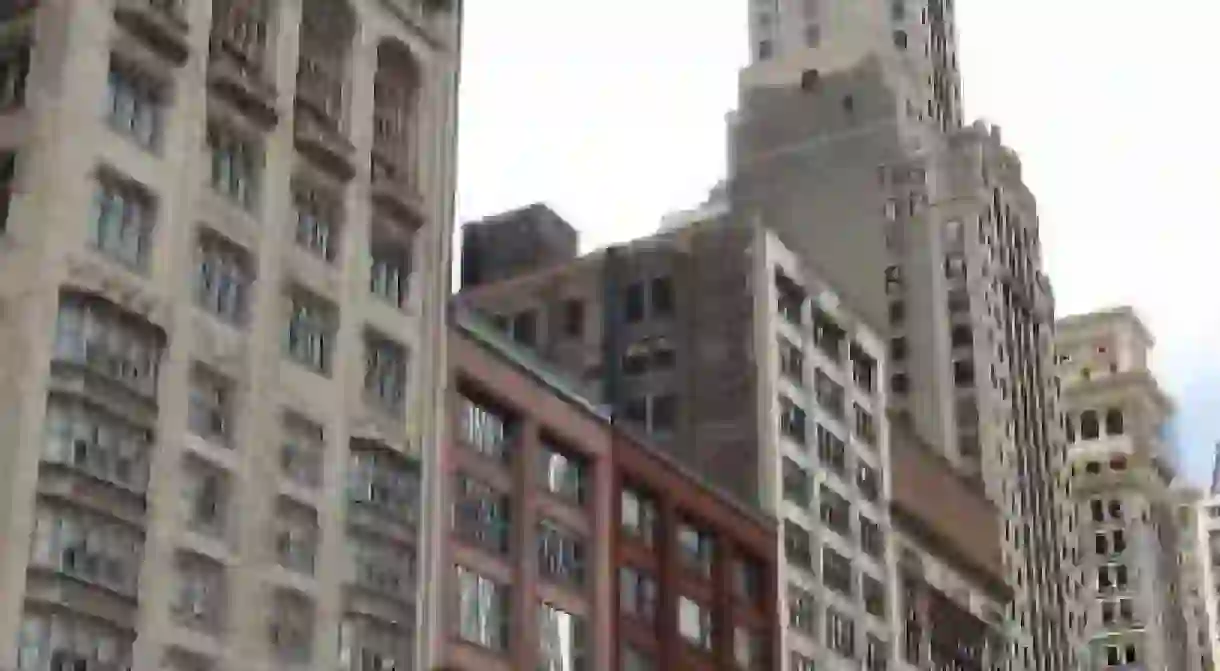Top 6 Historic Gems In The Loop, Chicago

Chicago is undoubtedly one historic city. This city developed and boomed like no other. Rich in history, culture, and firsts, Chicago was the stage for westward expansion, industrial pioneering, and a cultural hub for the nation. Although vastly consumed by modern buildings and skyscrapers, there are many historic gems that still stand today. Neighborhoods like Lincoln Park and the Gold Coast have a lot of historic homes, but the Loop takes the prize in historic buildings that you pass everyday and might not even know it. Through the hustle and bustle of the busy Loop street scenes, these buildings hold the memory of Chicago’s history.

Marshall Field and Company Building
Building, Store

Known as the Macy’s on State Street, the former Marshall Field and Company Building houses a rich history of the development of the department store. ‘Give the lady what she wants’ was the motto of Mr. Marshall Field, the man behind the successful chain store. The idea of ‘window shopping’ and ‘customer service’ was essentially developed in this building. Marshall Field strove to give the customer what they wanted — to make their shopping experience the best they have ever had. Not only was this building a hub for sales but also houses beautiful architectural gems, such as a mosaic ceiling done by Tiffany & Co.
Carson, Pirie, Scott and Company Building
Building, Store

The Sullivan Center was formerly the Carson, Pirie, Scott and Company Building and now houses a few shops and restaurants — Target being the most recognizable store in the building. Famous for its beautiful façade and steel structure, the history behind the building is even more fascinating. Designed by Louis Sullivan in 1899, the building was sold to many businesses and owners in a short span. The land was owned by Marshall Field (who owned a fair amount of property in the city), and the building was sold to Schlesinger & Mayer, Selfridges, and then to Otto Young who then leased to it Carson Pirie Scott. Lavish interior and exteriors might take the prize for captivating onlookers on State Street, but the planning behind this building is even more captivating.
The Pittsfield Building
Building

From the outside, this building is just another old building on the walk to Millennium Park from the Loop. However, this historic gem is also a hidden one. Enter through the French café Toni Patisserie and marvel at the glamorous art deco and gothic interiors this building has to offer. Marshall Field’s heirs developed this building and named it after his hometown: Pittsfield, Massachusetts. When it was completed in 1927, this building was the tallest skyscraper in Chicago. Now it contains many office and residential spaces but is still accessible to the public, with the art deco atrium greeting all who enter.
The Fisher Building
Building

Designed by Charles Atwood and built by D.H. Burnham & Company in 1896, this neo-Gothic building stands tall and proud in the Loop. Commissioned by paper magnet Lucius Fisher, the buildings façade contains amazing details that are often missed by people who walk past it. If you look closely, you can pinpoint ornately carved animals. The building now hosts apartments for rent and has a few great places to eat on the main floor, including the local favorite, Dollop Coffee Company.
Monadnock Building
Building

Built in 1891 by Burnham & Root, this building was an innovative first in architectural history. When it was completed, it was the tallest commercial iron frame building. The design also featured the first portal system of wind bracing in the nation. The second half of the building was designed by Holabird & Roche and featured ornately modern designs; some say it was the first modern interior design in the city. It was also the largest office building upon its completion. From the outside, the building houses many shops and offices, and the interiors are easy to miss. Next time you walk past this building, stop in and marvel in the beautiful art deco features inside. Winding curves and ornate details of staircases and woodworks make this building incredibly unique and beautiful.
The Marquette Building
Building

Completed in 1895, the Marquette Building was a symbol of hope and growth after the Great Chicago Fire. The commercial building was designed in a Venetian style, echoing the grand houses and buildings of Europe during that time. It was designed by Holabird & Roche and is one of the best examples of the Chicago School of Architecture, featuring large ‘Chicago windows.’ The Marquette Building contains mosaics made by Tiffany & Co, which display the journey of its namesake Jacques Marquette, the missionary who led an expedition to North American territory and wintered in modern-day Chicago.













